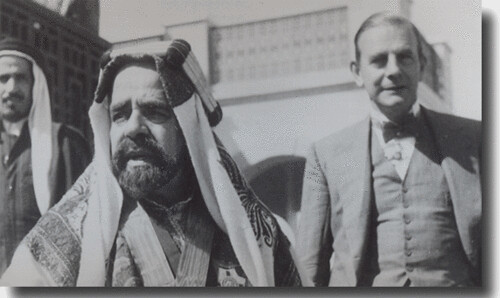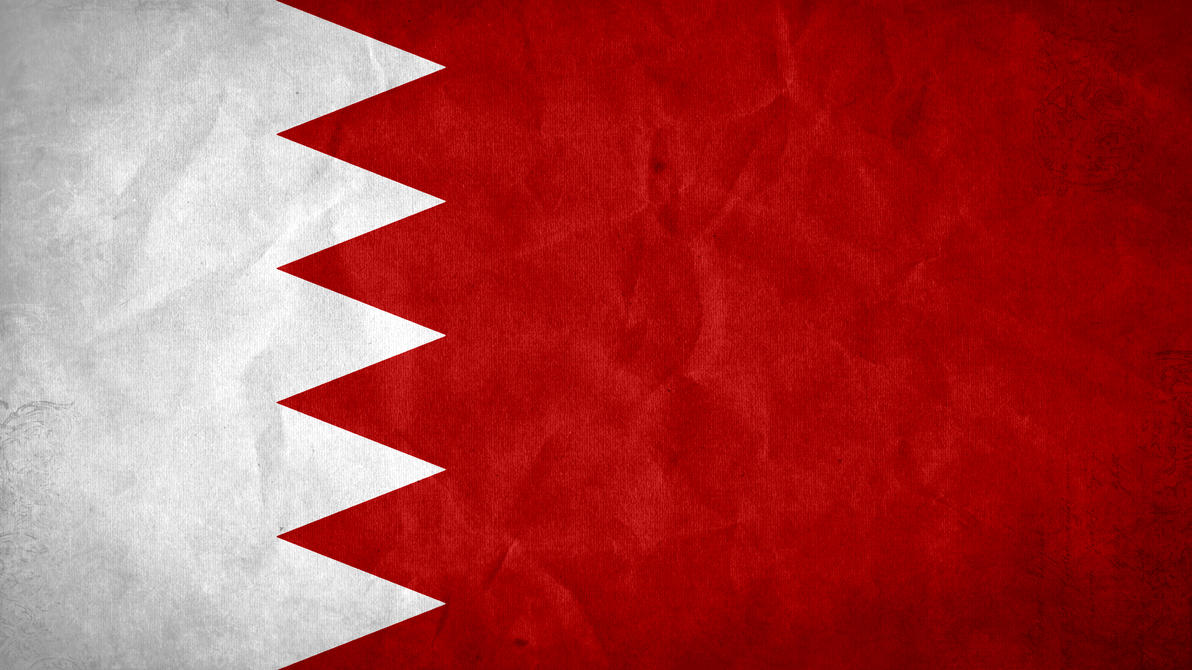<= 59. Djibouti 61. Comoros =>
1. Geography of Bahrain
Bahrain is a small island in the Persian Gulf. The main island is 55 km long and 18 km wide. The total area is only 765 square kilometers. Bahrain is connected to Saudi-Arabia with a 25 km long bridge and there are plans to construct a 40 km long bridge to Qatar. The sea is important for Bahrain, because of the trade Bahrain has been for centuries an important trade base in the Persian Gulf. Even the name of the country comes from the sea, "Bahr" means sea in Arabic and "Bahrayn" is the dual form of sea, meaning "the two seas".
2. Ancient Bahrain
Before Islam Bahrain was a center of Nestorian Christianity. The Byzantine Empire considered them as heretics though, but Bahrain was outside of the Empire's reach luckily. Bahrain was influenced mostly by Persia and the Hellenistic world in the antiquity. The upper class spoke Greek while the common people Aramaic. Even some Greek athletic contests were held in Bahrain. Some Greek historians believed that the Phoenicians originated from Bahrain, but these claims haven't been confirmed by modern historians. Also Persian Zoroastrians and Jews inhabited the pre-Islamic Bahrain.
3. UK rule in Bahrain
1820 The Al-Khalifa family was recognized as the rulers of Bahrain by the UK
1860 Bahrain got the status of a UK protectorate
1892 Bahrain became a UK colony
The British Charles Belgrave was an adviser to the ruler from the 1920s until 1957. He brought great reforms in Bahrain like the establishment of the first modern school in 1919 and the first school for girls in the Persian Gulf in 1928. Slavery was also abolished in 1937. Bahrain was also the first Arab country to start oil drilling in 1932. Slowly pearl fishing had to move aside and oil production started to transform Bahrain wealthy.
1971 Bahrain becomes independent
1. Geography of Bahrain
Bahrain is a small island in the Persian Gulf. The main island is 55 km long and 18 km wide. The total area is only 765 square kilometers. Bahrain is connected to Saudi-Arabia with a 25 km long bridge and there are plans to construct a 40 km long bridge to Qatar. The sea is important for Bahrain, because of the trade Bahrain has been for centuries an important trade base in the Persian Gulf. Even the name of the country comes from the sea, "Bahr" means sea in Arabic and "Bahrayn" is the dual form of sea, meaning "the two seas".
 |
| King Fahd Causeway, the bridge between Bahrain and Saudi Arabia |
2. Ancient Bahrain
Before Islam Bahrain was a center of Nestorian Christianity. The Byzantine Empire considered them as heretics though, but Bahrain was outside of the Empire's reach luckily. Bahrain was influenced mostly by Persia and the Hellenistic world in the antiquity. The upper class spoke Greek while the common people Aramaic. Even some Greek athletic contests were held in Bahrain. Some Greek historians believed that the Phoenicians originated from Bahrain, but these claims haven't been confirmed by modern historians. Also Persian Zoroastrians and Jews inhabited the pre-Islamic Bahrain.
 |
| Nestorian Christian missions in Asia |
3. UK rule in Bahrain
1820 The Al-Khalifa family was recognized as the rulers of Bahrain by the UK
1860 Bahrain got the status of a UK protectorate
1892 Bahrain became a UK colony
The British Charles Belgrave was an adviser to the ruler from the 1920s until 1957. He brought great reforms in Bahrain like the establishment of the first modern school in 1919 and the first school for girls in the Persian Gulf in 1928. Slavery was also abolished in 1937. Bahrain was also the first Arab country to start oil drilling in 1932. Slowly pearl fishing had to move aside and oil production started to transform Bahrain wealthy.
1971 Bahrain becomes independent
 |
| Salman bin Hamad Al-Khalifa and Charles Belgrave |
4. Al-Khalifa Dynasty
Originally the Al-Khalifa family lived in Umm Qasr, Iraq, where they robbed caravans of Basra and pirated ships until the Turks expelled them to Kuwait. The Al-Khalifa family moved to Bahrain in 1797 and in 1820 the Al-Khalifa tribe was recognized as the rulers of Bahrain by Great Britain.
The Al-Khalifa family is still ruling Bahrain and more than a half of the Bahraini ministers belong to the Al-Khalifa family. The current prime minister Khalifa bin Salman al-Khalifa has been the prime minister of Bahrain since 1970, which is a world record in duration. He is the uncle of the current king Hamad bin Isa Al-Khalifa.
Hamad was coronated in 2002 as a king and he replaced his father Isa bin Salman Al-Khalifa in 1999. His father's rule was quite oppressive and Hamad modernized the country in terms of human rights, which still remain a problem like the Arab Spring demonstrated in 2011.
 |
| Hamad bin Isa al-Khalifa, current king of Bahrain |
5. Bahraini Flag
1820 Bahrain until this a red flag as their symbol, but as a request from the British they added a white stripe to demonstrate that it's not a pirate ship because piracy was a huge problem at the time in the Persian Gulf.
1932 The flag was modified to distinguish it from the similar flags of Dubai and Ajman. Twenty eight sawteeth were added.
 |
2002 The amount of sawteeth was decreased from 9 to 5. These five sawteeth represent the five holy pillars of Islam, which are the faith, prayer, alms-giving, fasting and the pilgrimage to Mecca. The reason to this symbolism was to decrease the confrontation between the Shia and Sunni population of Bahrain.
Timeline
628 Bahrain was among the first areas to convert into Islam
899-976 The Qarmatians ruled in Bahrain trying to create a utopian society
1076-1235 The Uyunids ruled Bahrain
1253 Bedouin Usfurids gained control over eastern Arabia
1330 Bahrain became a tributary state of the rulers of Hormuz
1400s The Jabrids ruled Bahrain
1521 The Portuguese started ruling the area allying with Hormuz against the Jabrids
1602 The Portuguese are expelled by the Safavid dynasty of Persia
1753-1783 Iran's rule is restored
1797 Al Khalifa family moves to Bahrain
1820 Al Khalifa dynasty was recognized as the rulers by the United Kingdom after signing a treaty
1860 To diminish the influence of the Saudis and Persia, United Kingdom transformed Bahrain into a protectorate
1868 Qatari-Bahraini War
1892 Bahrain is supressed to a colony of the United Kingdom after a coup
1932 The flag of Bahrain was changed to distinguish it from the flags of Dubai and Ajman
1971 Bahrain becomes independent
1972 Bahrain joins the UN and the Arab League
1981 Shia fundamentalists try to overthrow the Sunna Emir
1999 Hamad bin Isa al-Khalifa becomes the new ruler modernizing the country
2002 Flag reform, the amount of sawteeth in the flag is diminished from 9 to 5
2011 Arab Spring, USA fears for its military base and comes to support king Khalifa, who requested troops from Saudi-Arabia and the UAE to help, the demonstrations for democracy were violent
899-976 The Qarmatians ruled in Bahrain trying to create a utopian society
1076-1235 The Uyunids ruled Bahrain
1253 Bedouin Usfurids gained control over eastern Arabia
1330 Bahrain became a tributary state of the rulers of Hormuz
1400s The Jabrids ruled Bahrain
1521 The Portuguese started ruling the area allying with Hormuz against the Jabrids
1602 The Portuguese are expelled by the Safavid dynasty of Persia
1753-1783 Iran's rule is restored
1797 Al Khalifa family moves to Bahrain
1820 Al Khalifa dynasty was recognized as the rulers by the United Kingdom after signing a treaty
1860 To diminish the influence of the Saudis and Persia, United Kingdom transformed Bahrain into a protectorate
1868 Qatari-Bahraini War
1892 Bahrain is supressed to a colony of the United Kingdom after a coup
1932 The flag of Bahrain was changed to distinguish it from the flags of Dubai and Ajman
1971 Bahrain becomes independent
1972 Bahrain joins the UN and the Arab League
1981 Shia fundamentalists try to overthrow the Sunna Emir
1999 Hamad bin Isa al-Khalifa becomes the new ruler modernizing the country
2002 Flag reform, the amount of sawteeth in the flag is diminished from 9 to 5
2011 Arab Spring, USA fears for its military base and comes to support king Khalifa, who requested troops from Saudi-Arabia and the UAE to help, the demonstrations for democracy were violent
Sources:
https://en.wikipedia.org/wiki/Bahrain
Maailman maat liput ja historia by Kimmo Kiljunen
https://en.wikipedia.org/wiki/Bahrain
Maailman maat liput ja historia by Kimmo Kiljunen





No comments:
Post a Comment